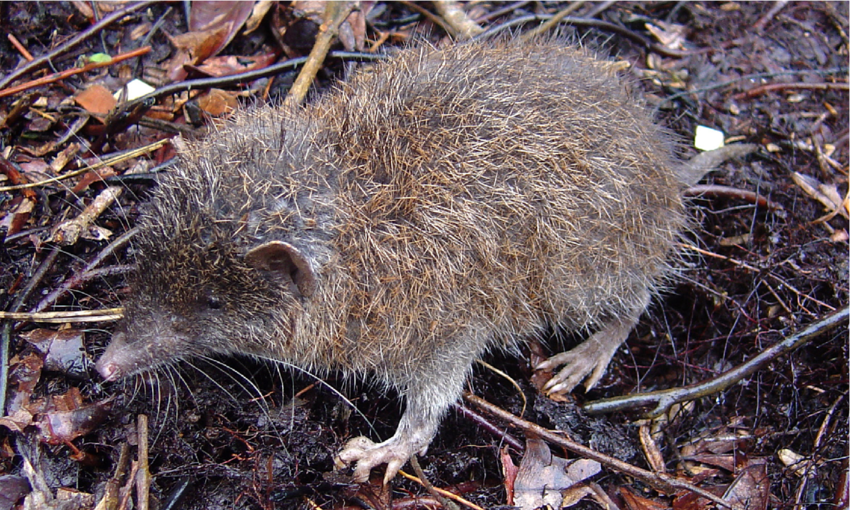If you cannot find the answer you are looking for, please contact us.
Eastern Mindanao gymnure

Discovered and formally described in 2023, the Eastern Mindanao Gymnure is a newly recognized species found only in the eastern highlands of Mindanao, distinguished by its medium size and golden-tipped fur.
Taxonomy
| Kingdom: | Animalia |
| Phylum: | Chordata |
| Class: | Mammalia |
| Order: | Eulipotyphla |
| Family: | Erinaceidae |
| Genus: | Podogymnura |
| Species: | Podogymnura intermedia |
Not a ‘real’ hedgehog
The Eastern Mindanao Gymnure shares a family with true hedgehogs and like them is nocturnal, insectivorous, and has a developed sense of smell. However, it lacks spines and the ability to roll into a ball, featuring soft fur and a shrew-like body. These traits underscore its identity as a gymnure, a close but distinct relative of hedgehogs with its own unique ecological adaptations.
Natural range & habitat
This gymnure is known only from two isolated mountains in southeastern Mindanao, Mount Hamiguitan and Mount Kampalili. It inhabits montane forests between approximately 950 and 1,900 meters elevation, with Hamiguitan specimens found on steep slopes and Kampalili in swampy and moor-like environments. The Eastern Mindanao highlands appear to be a hotspot for unique mammal diversity, yet are still poorly surveyed.
Physical traits
It is of intermediate size compared to other Philippine gymnures. Specimens from Hamiguitan average around 17.1 cm in length and weigh about 96 g, while those from Kampalili are somewhat smaller, at around 14.5 cm and 77 g . Its dorsal fur is dark brown, tipped with numerous golden-yellow hairs that give a subtle sheen, a distinctive trait among its relatives.
Behavior & lifestyle
Terrestrial and secretive, individuals have been found beneath logs, forest litter, and in mossy ground cover, indicative of ground-dwelling habits. Their habitats in high elevation forests suggest they rely on dense vegetation and leaf litter for shelter and foraging.
Communication
No direct observations exist, but like other gymnures, communication likely involves scent marking and tactile cues. Soft vocalizations may also occur during breeding or close-range encounters.
Diet in the wild
Stomach content analysis shows they feed on invertebrates, including beetle larvae, centipedes, land snails, and earthworms, all typical ground-floor fare in leaf litter environments.
Reproduction & life cycle
Observations indicate possible breeding seasons: males with enlarged testes and juveniles were both recorded in May, and mating behavior may occur earlier in the year . Precise information on litter size or lifecycle remains unstudied.
Threats & conservation status
Not yet evaluated by the IUCN, the Eastern Mindanao Gymnure faces potential threats from deforestation, mining, agriculture, and infrastructure encroachment in Mindanao’s eastern highlands. Its restricted range and reliance on specialized montane forest habitats make it particularly vulnerable.
This species in captivity
There are no known records of this species in captivity. Its rarity, remote habitat, and specialized ecological requirements make it unsuitable for captive care. Conservation must prioritize protecting its natural forest homes.
